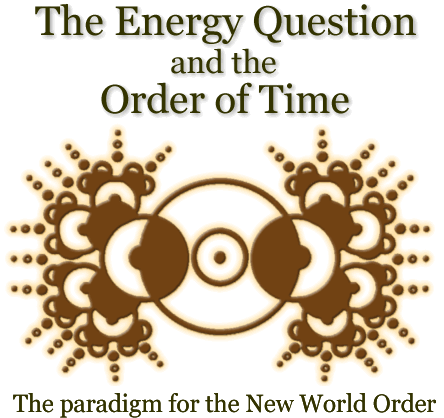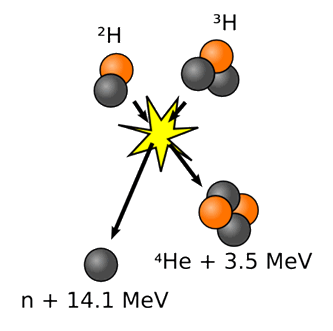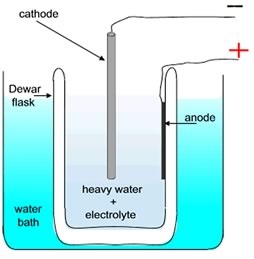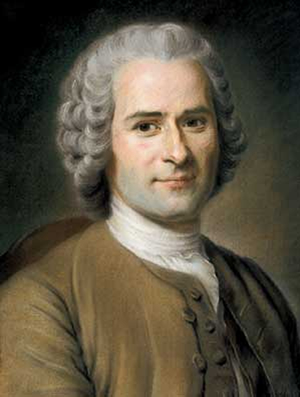Pamphlet for a New
Energy Policy

"All truth
passes through three stages.
First, it is ridiculed.
Second, it is violently
opposed.
Third, it is accepted as being
self-evident."
Arthur
Schopenhauer
(1788-1860)
1) The
necessity
of a new energy policy
The modern
energy question is a profound one.
The survival of mankind is at
stake. As we clearly see at the
beginning of the 21th century, we
cannot continue using fossil
fuels. We must transition to
sustainable energy sources, partly
because 1) the energy resources of
oil, gas and other fossil fuels
are depleting, but also 2) because
the use of non-sustainable energy
sources, leading to excessive CO2
emissions, poses an imminent
threat for the biological balance
and the habitability of this
planet.
Additionally, we face geopolitical
governance and related military
power conflicts in connection with
the pursuit of a
mew world order in response
to the numerous crises of climate
change .

With
the second factor of the
environment, indicating the limits
of what Mother Earth can bear from
us humans, we seem to be
approaching a tipping point. The
climate warming around mid-2007 is
a well-established fact, but even
in the 50 years prior to that, the
intensity of sunlight, for
example, measured by the so-called
pan-evaporation, a sort of
meteorological evaporation index,
decreased by about 15%, presumably
due to soot particles and other
chemical compounds in the higher
atmospheric layers around the
Earth. Causes and consequences are
under discussion. An increase in
atmospheric particles results in a
'dimming' effect, but due to
recent climate measures, this
dimming is decreasing, and
pan-evaporation is increasing
again (see, for example, Wikipedia
on global
dimming
and pan-evaporatie).
The CO2 level on Earth shows
natural fluctuations; historical
data obtained from tree rings and
ice cores are subject to multiple
interpretations. Feedback
mechanisms between the atmosphere,
ice masses, oceans, and the
biosphere, which can cause rapid
escalations or mitigate climate
effects, also make a precise
assessment of the influence of CO2
levels uncertain. Climate effects
are difficult to predict due to
tipping points that can lead to
unexpected developments, such as a
faster rising sea level or,
conversely, a not yet alarming but
certainly slightly decreasing
oxygen content in the atmosphere
due to more combustion, fewer
forests, and reduced ocean
vitality due to CO2-induced
acidification. Conversely again,
extreme weather, such as sudden
cooling, can be temporarily caused
by events like volcanic eruptions.
Climate effects in terms of
drought and precipitation vary
regionally, so a changing climate
balance does not immediately
provide clarity about its causes
and consequences, about the
seriousness of the situation, or
whether it is an acceptable
natural variation temporarily
responding to the influence of
human culture, which is also
subject to (self)limitation. There
is much confusion, even in
science. There is also a
psychological effect of no longer
being aware of the problem due to
habituation and rationalization,
much like a frog not jumping out
of a pot of gradually boiling
water. Nevertheless, scientific
progress in the development of
climate models, improved risk
assessments, and enhancements in
technological and ecopolitical
adaptation strategies provide us
with greater resilience and a
better understanding of the
climate problem. Despite
uncertainties about the causes and
consequences of CO2 levels,
climate change, and geopolitical
issues, as well as uncertainties
about what we could do about them
so far, an overwhelming majority
of experts agree that human
activities significantly
contribute to higher levels of CO2
and other greenhouse gases, and
thus, also to associated climate
change. Heat in the atmosphere is
trapped, indeed, like in a
greenhouse. Hence, a proactive
approach, a strategy preventing
worse outcomes, is necessary to
counter and reverse climate
changes. Limits have been set on
our growth and consumptive
desires; we need to plant more
trees to absorb CO2 and develop
more sustainable energy sources to
prevent global warming.
It is clear that many
factors must be considered if we
want to transition to a different
way of generating energy while
preserving the natural and
cultural order on our planet. It
can be overwhelming to realize the
complexity of the climate problem
and the energy issue. There are
effects such as desertification,
the global food problem, water
management, the dying off of
marine and terrestrial life, the
melting of polar ice caps, and the
permafrost in Siberia, releasing
vast amounts of methane gas that
further contribute to the
greenhouse effect.
Every aspect of the crisis
facing our world has its own
implications for the environment
and culture and requires its own
measures. A so-called
emission-neutral, sustainable
policy might theoretically create
a political balance between
warming due to the greenhouse
effect and cooling as a result of
climate measures taken. However,
simply pausing and relying solely
on pollution prevention and the
use of biofuels and other
non-emission-free, less
sustainable techniques could lead
to far-reaching negative
consequences. The problem of clean
energy technology is not solved
with compensation measures alone.
A further decline in the
overall habitability of the planet
and in energy and food policies,
as well as further disruption of
the natural balance of the
associated climate and human,
animal, and plant well-being, will
inevitably lead to significant
cultural and political problems
when pursuing policies based on
political feasibility but acting
fundamentally from ecological
ignorance. We cannot be content
with this. With a one-sided,
purely economically understood
policy of 'cleaning the
atmosphere' and 'creating a new
balance', the planet's temperature
could rise by several degrees in
just a few decades, melt the
pole caps and cause catastrophic
consequences for all low-lying
coastal areas worldwide.
We must not delude
ourselves into thinking that we
can solve this with solar panels
and wind turbines. Climate science
warns against such policy
simplifications. A broad-spectrum
approach is needed, including
scientifically. We need a constant
energy source with a much higher
energy density than solar photons
and an unstable atmosphere. Thus,
in the search for alternative
energy sources, there has been a
renewed interest in nuclear
energy. Nuclear power plants,
based on atom splitting, have
optimal energy density with their
nuclear fuel; however, they are
not inherently clean energy
sources due to the atomic fissile
materials they require. Uranium
and similar radioactive metals not
only pose an environmental problem
with the radioactive waste they
leave behind but also, as widely
known, come with great danger. If
something goes wrong, we face
nearly irreparable environmental
damage. The disasters in
Chernobyl, Ukraine, and Fukushima,
Japan, serve as examples of this.
 So
also could next to that, in the
search for alternative energy
resources, a renewed interest for
nuclear energy be observed, which
essentially constitutes no
sustainable source of energy
because of the fossil nuclear
materials that are needed. And
there is also a serious objection,
as is generally known, against the
nuclear waste and the danger of
this method. An alternative
technology for nuclear energy
production would be the technology
of nuclear fusion. As yet
is the most favorable technique
for controlling the immense heat
needed for the nuclear fusion the
floating and spinning of the
fusion plasma in a strong magnetic
field in a so-called tokamak. This
technology though delivers no
degree of overunity in 2007: one
never achieves more energy out of
the process than one has put in.
The entire project of nuclear
fusion without a fusion-efficient
form of fuel just might turn out
to be a terribly expensive
illusion. Helium-3, a
helium atom missing a neutron,
would be a candidate to have a
more efficient output with less
input of energy in the fusion
process. The element itself is
radioactive neutral so that less
problematic radiation is released
with the nuclear fusion. It offers
a cleaner fusion process, be it
that one also with the He-3 cannot
reach an entirely radiation-free
production of energy. The element
which on itself is stable in a
crystalline form and with its
special properties extensively is
researched by the physicist E.R. Dobbs, is rare
on earth but abundantly available
on the moon as a form of
precipitated solar wind. Even
though He-3 can be artificially
created from Tritium-decay and
also is known as a byproduct of
nuclear weapons, must it, to
supply the entire world
efficiently with energy, be mined
on the moon. An enthused adherent
of the method may, via a handy
website selling options on lunar
territory, in advance reserve a place
there. One supposedly
could find there enough energy in
the form of Helium-3 for the
entire earth for many centuries.
But such a policy of winning
energy will with the moon bases
and space-shuttles required, be
such an economically, culturally
and scientifically extensive
operation that, not even
considering that the supply of
He-3 at the moon is also finite -
it is a very luxurious type of
fossil fuel thus -, also this
option must be discarded as being
too uncertain in an economic
sense, too dangerous in a
geopolitical sense and as
technologically too laborious.
Nuclear fusion in other ways, like
the so-called aneutronic fusion
process which is not in need of
any He-3, has itself as yet not
unequivocally proven as being
efficient, or even as a feasible
practice. Nuclear fusion seems to
be a beautiful scientific
challenge, but whether it is ever
going to be a realistic
alternative source of energy free
from ecological, political and
economic objections, is thus most
uncertain, despite of the enormous
scientific efforts and financial
expenses in the previous decennia. So
also could next to that, in the
search for alternative energy
resources, a renewed interest for
nuclear energy be observed, which
essentially constitutes no
sustainable source of energy
because of the fossil nuclear
materials that are needed. And
there is also a serious objection,
as is generally known, against the
nuclear waste and the danger of
this method. An alternative
technology for nuclear energy
production would be the technology
of nuclear fusion. As yet
is the most favorable technique
for controlling the immense heat
needed for the nuclear fusion the
floating and spinning of the
fusion plasma in a strong magnetic
field in a so-called tokamak. This
technology though delivers no
degree of overunity in 2007: one
never achieves more energy out of
the process than one has put in.
The entire project of nuclear
fusion without a fusion-efficient
form of fuel just might turn out
to be a terribly expensive
illusion. Helium-3, a
helium atom missing a neutron,
would be a candidate to have a
more efficient output with less
input of energy in the fusion
process. The element itself is
radioactive neutral so that less
problematic radiation is released
with the nuclear fusion. It offers
a cleaner fusion process, be it
that one also with the He-3 cannot
reach an entirely radiation-free
production of energy. The element
which on itself is stable in a
crystalline form and with its
special properties extensively is
researched by the physicist E.R. Dobbs, is rare
on earth but abundantly available
on the moon as a form of
precipitated solar wind. Even
though He-3 can be artificially
created from Tritium-decay and
also is known as a byproduct of
nuclear weapons, must it, to
supply the entire world
efficiently with energy, be mined
on the moon. An enthused adherent
of the method may, via a handy
website selling options on lunar
territory, in advance reserve a place
there. One supposedly
could find there enough energy in
the form of Helium-3 for the
entire earth for many centuries.
But such a policy of winning
energy will with the moon bases
and space-shuttles required, be
such an economically, culturally
and scientifically extensive
operation that, not even
considering that the supply of
He-3 at the moon is also finite -
it is a very luxurious type of
fossil fuel thus -, also this
option must be discarded as being
too uncertain in an economic
sense, too dangerous in a
geopolitical sense and as
technologically too laborious.
Nuclear fusion in other ways, like
the so-called aneutronic fusion
process which is not in need of
any He-3, has itself as yet not
unequivocally proven as being
efficient, or even as a feasible
practice. Nuclear fusion seems to
be a beautiful scientific
challenge, but whether it is ever
going to be a realistic
alternative source of energy free
from ecological, political and
economic objections, is thus most
uncertain, despite of the enormous
scientific efforts and financial
expenses in the previous decennia.
More
in line with a mechanically
easily manageable and
economically efficient approach
in this field is the so-called 'cold
fusion', also
known as low energy nuclear
reaction (LENR), first
developed in 1989 by the
chemists B. Stanley Pons and
Martin Fleischmann from the
University of Utah in de U.S.A.
They demonstrated how, with just
two electrodes (an anode of
platinum, and a cathode of
palladium) in heavy water
(deuterium oxide) with low
current can, additional heat of
heat excess can be generated,
only explainable by a nuclear
process. Although the process,
which produces no harmful
radiation, was not immediately
well understood or controlled,
the fact that this effect could
be generated for one up to two
days and leven longer using only
a small container of (heavy)
water, contradicted existing
scientific models. Cold fusion
was therefore initially met with
skepticism.
However, in 1990,
Michael McKubre, the director of
the Energy Research Center of
Stanford Research International,
along with the researchers
Richard A. Oriani of the
University of  Minnesota, Robert
A. Huggins of Stanford
University and Y. Arata of the
University of Osaka in Japan, joined
in supporing their findings. In
50% of the investigations they
found the mentioned results of
additional heat and other
related phenomena. In 1993 a
group of U.S. Navy
researchers of the China Lake
Naval Weapons Center in
California, led
by the chemist Melvin Miles,
conducted an investigation into
the bubbles developing in the
device. that were appearing in
the device. They concluded from
mass spectrometric measurements
that Helium-4 was present.
Despite the fact that the
quantities found did not match
existing theories, they provided
evidence that a form of
room-temperature atomic fusion
had indeed occurred, explaining
the heat production. Minnesota, Robert
A. Huggins of Stanford
University and Y. Arata of the
University of Osaka in Japan, joined
in supporing their findings. In
50% of the investigations they
found the mentioned results of
additional heat and other
related phenomena. In 1993 a
group of U.S. Navy
researchers of the China Lake
Naval Weapons Center in
California, led
by the chemist Melvin Miles,
conducted an investigation into
the bubbles developing in the
device. that were appearing in
the device. They concluded from
mass spectrometric measurements
that Helium-4 was present.
Despite the fact that the
quantities found did not match
existing theories, they provided
evidence that a form of
room-temperature atomic fusion
had indeed occurred, explaining
the heat production.
In fusion, two
heavy 2H or deuterium atoms
merge into Helium-4 with the
release of energy. In hot
fusion, millions of degrees
Celsius are required, using
additional, hard-to-obtain
tritium, another isotope of
hydrogen. But how can such a
process occur at room
temperature? Even though this is
clearly a case of protoscience,
a science still in its infancy,
it is often labeled as pseudoscience,
or a form of self-deception or
delusion based on flawed
methods, with the standard
mutual skepticism regarding each
other's research designs.
However, it wasn't the methods
that were flawed, given all the
sincere scientific efforts; it
was the prevailing paradigm that
was flawed.
To
understand why cold fusion is
often wrongly labeled as
pseudoscience, or why such an
important research phenomenon is
misclassified, we need
psychology, philosophy, and
other scientific disciplines.
With the mysterious research
results, one ends up outside the
boundaries of the prevailing
classical model of physics.
Scientists are not quick to
abandon the familiar territory
of natural science with
paradoxical results pointing to
unknown processes. Such a
convention-bound group of
scientists cannot easily master
all the additional sciences that
play a role in such a
significant shift in scientific
thinking."
Despite
of the great number of published
investigations that found an
anomalous heat production,
concluded the United
States
Department of Energy that in
1989 formed a research panel to
investigate the case, that no
sufficient proof had been
delivered for the reality of
this cold fusion process and
that for that reason no research
funds needed to be provided for
further development. Also a
second panel in 2004 arrived at
a likewise conclusion, be it
that the argument against had
been watered down. The report of
2004 in fact constituted a
turning point because from its
conclusions the more reputed
scientists and more important
commercial magazines (Time,
Scientific American) now dared
to pay some more attention to
the subject. But nevertheless
one also in 2007 in the U.S.A.
was investing many billions of
research grants for new energy
technologies rather in the far
more doubtful hot fusion
process, which thus never
delivered more energy - and thus
certainly also not more money -
than was put in. In the U.S.A.
cold fusion remained a taboo,
while one in Asia e.g. is more
inclined to reward patents in
this field. Also with science in
formal politics a narrow-minded
village mentality can be
prominent that, based on
ulterior motives and with
surpassing reason, rejects
everything which the
establishment of the confided
ego of exercising authority, the
usual teachings and the
associated wages earned that
way, would endanger.
For if there
would be a formal recognition,
the world would be turned upside
down, because we in that case
would have a revolution: all
societal and economic relations
would change and also would all
textbooks have to be rewritten
and the educational system be
reformed. And who would stand
and sign for that? Progress
ultimately is an egoless process
in which each and everyone plays
his part. Now at the beginning
of the 21st century
there are with that process
already commercial signs
observable, for also money runs
where it cannot go: Energy
Technologies in Israel, D2Fusion in
California, JET
Thermal Products in
Massachuchets, Mitsubishi
motors and The Mastrrr
Company in
Texas are the corporations that
2007 are engaged in harnessing
the process of cold fusion for
the sake of different purposes
like the purification of water,
mechanical propulsion, and the
supply of energy. What thereto
for the acceptance of the
greater public still is needed
is the entire account of the
paradigm associated with the
cultural change involved. In
this pamphlet the complete
of the paradigmatic question
with everything belonging
thereto will be discussed at
length. In this study, based on
the latest experimental and
theoretical findings in this
field of free energy as also on
the rest of the testimonies of
witnesses associated with the
question of energy, will be
attempted to contribute to the
further development of this new
paradigm for the 21st century,
now emerging in postmodern
times. We are on the way of a
renewed scientific thought
model, with which we may speak
of a new World Order. It then is
about, so it now appears, an
order which is not just based on
the, with of without military
means, preaching of 'democracy'
with blotting out state borders
in a mondial clime in which a
form of free enterprise is
allowed to rule that isn't
directly of service to the
social and biological climate of
the planet either. The cards are
shuffled differently thus. A
better ecological policy is
necessary, we after all have to
survive ourselves too with each
his individual freedom of
defending his material
interests.
It is all
about a broader and more
responsible concept of world
order, a concept which also
reaches beyond the three pillars
of internet communication,
hydrogen storage and the two-way
distribution of energy which, as
being the essence of a third
industrial revolution, lately
2007 was suggested by the
american economist Jeremy
Rifkin. His
still most expensive solution of
850 billion for an intelligent
energy network to feed back self
produced energy into the grid is
a new energy policy all right
but is still based on the old
paradigm of science. In the new
model emerging now under the
influence of cold fusion, and
the other free energy
technologies we will discus
later, everybody at every
moment of the day draws as much
'new energy' as he needs with
the new technology, and that can
privately be done as good as by
means of a central power plant,
we after all are talking
aboutfrom a truly free energy
market. Storage is this
new perspective not needed
anymore, and that is an extra
advantage for everyone on the
planet. What Rifkin is defending
so nicely up to date is seen in
this light again already
outdated. The progress at this
front is very fast. The hydrogen
obsession of storing energy is
not applicable any longer with
the direct, according the need
won energy of e.g. cars that run
on cold fusion generators (see
also: Basics; peswiki-article, Cold
fusion 18 years and heating up; Eugene
Mallove; News; ISCMNS
(society); Naudin
project; FAQ; Conferenties).

Culturally
and psychically we have to fear
for conflicts if we do not have a
clear notion of the inevitable
question of another policy of
winning energy. Winning energy we
are dealing with nature, nature
that gave us our form, nature that
educated us, that conditioned our
genes, that conditioned all of our
behavior, and our culture somehow
will have to reflect that
properly. Pragmatically thinking
in favor of a quick result and
economic success this is easily
forgotten. Nature operates upon
our genes and we switch with those
genes responding to her with
adapting ourselves to her
dynamics. Our genes constitute the
material with which we people,
also in our cultural activities,
find ourselves in an evolution
which cannot be stopped at will or
be obstructed. There is a cultural
as also a natural authority ruling
our lives. Ultimately it is about
the question, as we very well know
politically, who the boss would
be, who is leading us, what in our
decision making would come first.
It must be clear in our minds eye
whether, and to what degree, we
are formed by pragmatical and
economical dictates, which are
also known as an endless struggle
for power over whatever political
grip or whatever advantage would
have the - temporary - right of
way. Or differently we admit, like
it was proclaimed with the French
Revolution in the beginning, that
we have our footing in nature and
therein find our primary order and
harmony [see especially the works
of the philosopher J.J. Rousseau,
(1712-1778)]. When
we psychically want to get rid of
the cultural uncertainty and
personal misery which is the
consequence of a conflict between
the material interests of our
culture and those of nature, deeds
must be done, deeds that have
consequences for the policies of
winning energy and caring for the
environment. Caught between the
two fires of the material, idle,
short-sighted profit-mind and the
mind in favor of the spirit of the
preservation of nature which
demands more conscience and
effort, we may speak of a conflict
situation in which we psychically
are burdened with a tormenting
uncertainty about the following
question: wherein exactly can we
find our true certainty and
direction, our control and our
confidence? In that area of
tension we keep on searching for
harmony and balance without, in
our from attachments born
indecision, us ever finding a
collective solution or enduring
form of world peace and collective
righteousness of living.
A
definitive choice has to be made,
the indecision has to be given up
before we are forced to decisions
by the occurrence of cultural or
natural disasters. With putting an
end to this nature-culture
conflict, the way it for instance
lately is happening with the more
environmental friendly and
sustainable Cradle to Craddle
philosophy of
William McDonough and Michael
Braungart in the field of
corporate interests, the
democracy then may be more a
reflection of the order we find in
nature in stead of being a
reflection of an everlasting,
power-uncertain, political
struggle which is in fact a destructive
neurosis of culture. The struggle
based on the inability to act
directly from nature and to agree
about it amongst ourselves, must
end. That era we have to close.
Also in the sense of our
scientific thinking. The question
first of all is thus: in what ways
can we relate to nature when it is
about sustainable energy policies?
Next the question rises what the
scientific consequences would be
and how we exactly as normal
people in our educational systems,
and in what we personally teach
our children, have to consider
with the methods and technologies
found. How would such a world
order look like which is based
upon the natural order of the
wheelwork of nature, upon the
wheelwork of the clock formed by
the sun, the moon and the stars
and not so much any longer is
based on a division in territories
and other concepts of false
oneness, from the interest of
which we have to fight each
other's ego's? Is such a thing
possible? (see also the article Sun,
Moon and the new World Order)


-
-
|





